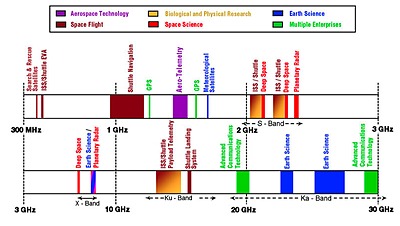NASA tests software-defined radio in orbit
SCaN test bed enables radio characteristics and functionality to be changed simply by altering the software.
NASA’s Space Communications and Navigation (SCaN) test bed has begun its experiments after completing its checkout on the International Space Station.
The SCaN test bed is an advanced, integrated communications laboratory facility that uses a new generation of software-defined radio (SDR) technology to allow researchers to develop, test and demonstrate advanced communications, networking and navigation technologies in space.
This radio communication technology is based on a new standard that enables radio characteristics and functionality to be changed simply by altering the software. It can be transferred to any radio built to the standard. The cost savings and efficiency of this new technology will improve NASA’s data communications in the future.

Checkout activities completed in February established the status and health of the payload, including the antenna systems and software on each of three SDRs. The test bed will help technology developers and mission planners understand how they will be used in future missions.
Initial experiments underway include advancing in S-band and Ka-band SDR technology and enhancing the capabilities of the existing communications paths, especially in the Ka-band. Researchers expect the test bed to operate aboard the space station for as long as six years.
“The SCaN Test bed represents a significant advancement in SDRs and its applications for NASA,” said David Irimies, project manager for the SCaN test bed at NASA’s Glenn Research Center in Cleveland. “Investigating these SDR technologies in the dynamic space environment increases their technology readiness level and maturity, which in turn can be used for future missions as risk reduction.”

An experiment with NASA’s latest Tracking and Data Relay Satellite (TDRS)-K will be the first in-orbit test and demonstration of a TDRS spacecraft acquiring and successfully auto-tracking a Ka-band user in low-Earth orbit.
This reconfigurable in-orbit laboratory provides broad participation to NASA, industry, academia and other government agencies. These experiments will contribute data to the Space Telecommunications Radio Standard Compliant repository and will enable future hardware platforms to use common, re-usable software modules to reduce development time and costs.
NASA continues to solicit proposals to participate in the development, integration and in-orbit execution of research and technology experiments and demonstrations using the test bed. The first users outside NASA are expected to demonstrate experiments on the SCaN test bed by 2014.
Wireless networks for mine management
Today's fleet management applications form the foundation for a future where driverless...
Wireless networks for mine management
Today's fleet management applications form the foundation for a future where driverless...
Interoperability for Tasmania's emergency services
Tasmanian police, fire and ambulance services can now communicate directly with each other,...





